Air Force Photojournalists (3N0X5) are the ones who document and build the image of the Air Force.
Their job is taking pictures to portray all aspects of the Air Force.
Air Force Photojournalists get to be involved and take pictures of a wide variety of different Air Force specialist positions.
This can be done from on the ground or in the air.
If flying in a jet and taking pictures excites you, then this position would be a perfect match.
Related Article – Air Force Broadcast Journalist (3N0X2): Career Details
Jump To A Section
What is Being an Air Force Photojournalist like?
Pay and Benefits
Job Reviews
Civilian Career Opportunities
Summary
Education, Requirements, and Training
The education, requirements, and training for this position are similar to other positions in the military.
Education
Individuals must have at minimum a High School Diploma or GED.
No prior education in photography is required but could be preferred.
The ASVAB requirements are to meet the general Air Force requirements.
Requirements
An Air Force Photojournalist should have knowledge of basic communication and photography theory.
They should have the ability to type at least 20 words a minute.
This is a communication position, so individuals who apply cannot have a speech impediment and should have the ability to read aloud and speak clearly.
As with other positions in the Air Force, you should be at least 17 years old and no more than 39 years old.
Also similar to other positions is the inability to have color blindness.
A driver’s license is required to operate government vehicles.
Individuals in this position will be asked to pass a National Agency Check, Local Agency Check, and Credit Check.
Related Article: Air Force Height And Weight Requirements
Training
As an Air Force Photojournalist, you will be required to complete 8.5 weeks of Basic Training.
After completing Basic Training, you will attend Ft. Meade in Maryland for 60 days.
This tech school is open to different Military branches and different communications positions.
This position is a highly desired position, and you may have to be on the waitlist prior to attending tech school.
What is Being an Air Force Photojournalist like?
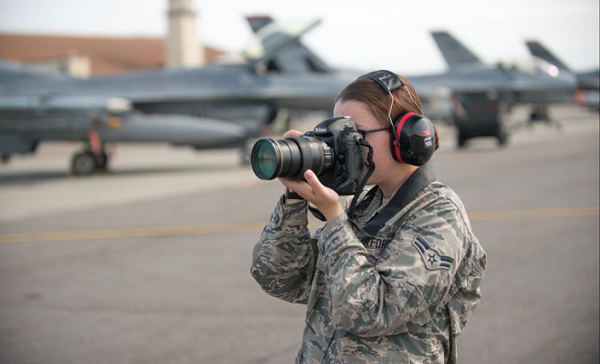
Being a Photojournalist for the Air Force is not a boring job.
Your position could be at any location all over the world, including in the air.
An Air Force Photojournalist completes joint operations to document and record exercises and contingencies that are for both internal and external use.
Photojournalists conduct research and interview subject matter experts.
They will take investigative photos and medical photo documentation for any incidents.
This could include taking crime scene photos.
Related Article – Combat Photographer And Videographer (MOS 4641/MOS 4671)
A Photojournalist has the task of depicting what the Air Force would like to release and portray through photos.
When taking pictures, an Air Force Photojournalist will work to create the image of the Air Force as a whole.
In addition to taking the pictures that shape the image of the Air Force, Photojournalists work with commanders and media operations to create and post content on social media, public and private websites and any other form of communication available.
As a Photojournalist, the position requires you to connect with media outlets, conduct interviews, and be the liaison between the Air Force and media.
Taking photos becomes an art.
This is a career path that people do as a hobby, so to get into this position as a career field is something most people consider themselves lucky to do.
In this position, you may take pictures of training exercises, incidents, wildlife, natural disasters, people, and more.
Not only are Photojournalist responsible for taking pictures, they are responsible for editing the photos.
You will learn different programming and publishing software.
Related Article – Marine Corps Combat Camera Production (MOS 4612)
This is something that must be completed whether you are at your desk or on the go.
The US Air Force video below shows what it is like to be a Photojournalist in the Air Force.
What Does an Air Force Photojournalist Make?
An Air Force Photojournalist’s basic pay will depend on the rank of the individual and the time served.
This is the same for base pay for all enlisted Air Force members.
The base pay table for the Air Force is below.
| Insignia | Pay Grade | Rank | Abbreviation | 2023 Minimum Monthly Pay |
|---|---|---|---|---|
| E-1 +4 months | Airman Basic | AB | $1,917.60 | |
| E-2 | Airman | Amn | $2,149.20 | |
| E-3 | Airman First Class | A1C | $2,259.90 | |
| E-4 | Senior Airman | SrA | $2,503.50 | |
| E-5 | Staff Sergeant | SSgt | $2,730.30 | |
| E-6 | Technical Sergeant | TSgt | $2,980.50 | |
| E-7 | Master Sergeant | MSgt | $3,445.80 | |
| E-8 | Senior Master Sergeant | SMSgt | $4,957.20 | |
| E-9 | Chief Master Sergeant | CMSgt | $6,055.50 | |
| E-9 | Command Chief Master Sergeant | CCM | $6,055.50 | |
| E-9 | Chief Master Sergeant Of The Air Force | CMSAF | $6,055.50 |
Benefits
The Air Force offers many benefits that you will not find in a similar civilian position.
Related Article – Marine Corps Combat Correspondent (MOS 4341)
Insurance
As an airman, you will receive free or low cost medical and dental insurance.
This insurance can be used at both military and civilian facilities.
Air Force members receive low rates on life insurance as well.
Time Off
The Air Force gives enlisted members paid sick time.
Individuals receive 30 days of paid vacation a year.
During this vacation time, airmen are free to travel locally or internationally.
Hotel quality lodging is available on base for a reduced cost for those who wish to travel near a base.
A perk of being in the Air Force is that individuals wishing to travel locally or internationally can take advantage of any open space on an Air Force aircraft.
Related Article – US Navy Mass Communication Specialist (MC): Career Profile
Housing and Food
The Air Force, like other branches, gives individuals housing and food allowances.
If you live on base, your housing will be covered.
This includes the utilities and maintenance costs.
Single Airmen receive a food allowance that allows for up to four free meals in the on-base dining hall.
Tax-free department and grocery stores are also available on base.
If you live off of the base, you can take advantage of the on-base department and grocery stores plus receive a housing allowance that is based on rank, military status, and location.
Retirement
The Air Force has one of the more generous retirement programs.
Airmen are eligible to retire after 20 years of service.
Once you are eligible to retire, you can begin receiving benefits that same day.
This retirement program is offered to individuals for free.
You do not need to have money reserved out of each check to pay for it.
If you are wanting to make sure that you have a little extra stored away for retirement, you can participate in an optional Thrift Savings Plan.
This plan allows you to save extra money from each check and place it into a retirement account.
Related Article – Army Combat Documentation/Production Specialist (MOS 25V)
Recreation
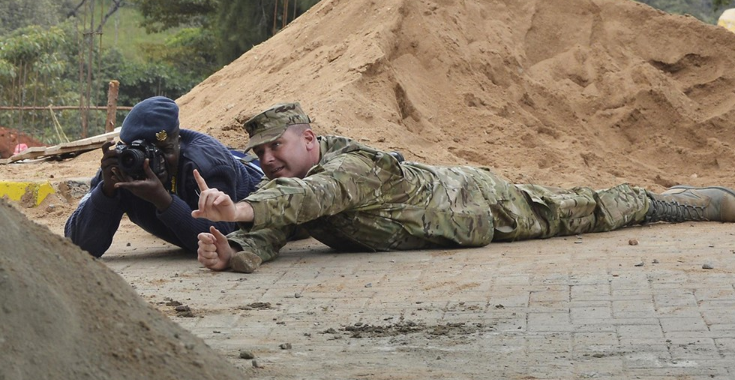
There are many reasons to live on-base.
The many recreational options are one of them.
Most bases have facilities such as bowling alleys, swimming pools, and golf courses.
There are also gyms and other recreational centers that are either free or available at a significantly lower cost than similar facilities located off-base.
The recreational activities are not just geared towards the enlisted member.
There are a variety of locations and social/sports programs geared toward every age family member.
Related Article – Military Child Care: 8 Great Options
Education
Being provided with free or low-cost education is another benefit of joining the Air Force.
As soon as you begin Basic Training, you will start earning college credits as you are considered enrolled in the Community College of the Air Force.
There are a few different tuition assistance options that can fully or partially cover the cost of furthering your education.
Some of the tuition options include:
- Air Force Tuition Assistance Program
- Post 9/11 GI Bill
- Montgomery GI Bill
Job Reviews
As this career is more desirable, you can contribute that to the satisfaction individuals have when they are in the position.
This position allows airmen to be involved with different branches and specialist positions in the Military.
It is exciting and can take you anywhere.
When looking at reviews, individuals note the travel and creative freedom this position gives them.
Here are a few reviews from Glassdoor from individuals who are Air Force Photojournalist.
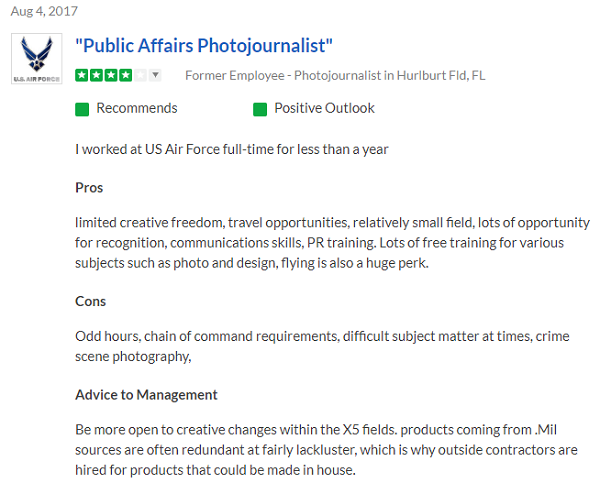
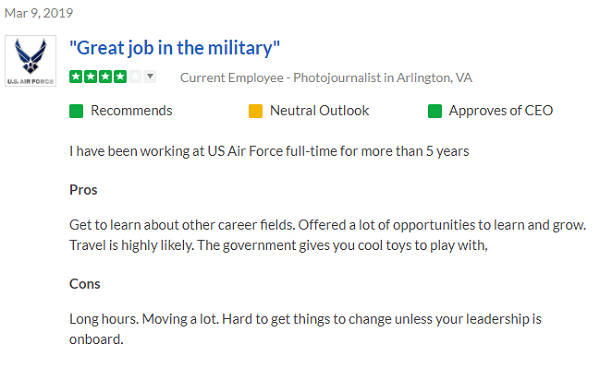
Some of the negatives that are mentioned in reviews include the long hours and the difficult subject matter that you may be asked to cover.
Civilian Career Opportunities
Obviously, being an Air Force Photojournalist would allow you to become a photographer in a civilian position, but there are also other opportunities.
As a photographer, you can work for the press, for local police agencies, or for the FBI.
You could work as a news anchor or news journalist.
Some of the programming and editing skills you learn could directly correlate to production and broadcasting.
Experience as an Air Force Photojournalist could lead an individual to criminal investigation and detective work.
Summary
Air Force Photojournalist is a position that allows for creative freedom and travel.
Individuals in this position have the important task of using the photos they take to depict the image of the Air Force.
Airmen will work with different specialty positions and record the events through photos.
The events may range from a training exercise to a natural disaster.
As an airman, you will receive basic pay and a range of benefits.
Air Force Photojournalists receive medical and dental benefits, paid sick time, vacation, and retirement.
You can also receive education tuition assistance.
Related Article: Does The National Guard Pay For College?
People who have previously held the position are satisfied with the job duties and experiences they gained.
After you leave the Air Force, there are a few different civilian career opportunities that could lead you to work for the media, local police agencies or the FBI.
References:
Jobs | Photojournalist – Air Force Reserve
- Replacing Dog Tags: 6 Things You Need to Know - June 28, 2024
- Navy OAR Test Study Guide - June 24, 2024
- 10 Best Sniper Movies of all Time - June 20, 2024
Originally posted on September 3, 2019 @ 1:24 am
Affiliate Disclosure: This post may contain affiliate links. If you click and purchase, I may receive a small commission at no extra cost to you. I only recommend products I have personally vetted. Learn more.
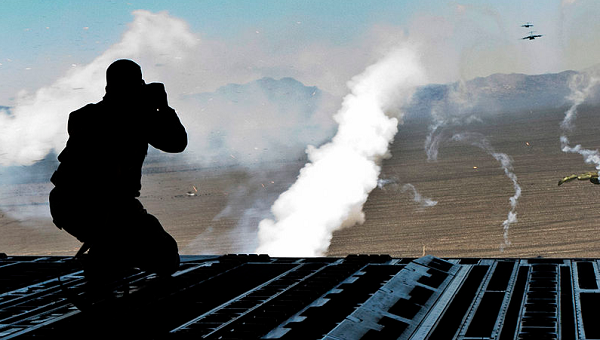
The “photojournalist” title implies mainly duties associated with photography, but that is just a fraction of what it actually does. Much of the description on this page misses the key responsibilities. The position used to be called a Public Affairs Specialist, but photography and tv/radio careers were consolidated into it requiring it to be renamed. Duties actually include mostly writing news and features articles, with photography, videography, social media, internal/external/media relations, and some radio as secondary responsibilities. Don’t be fooled into thinking this is just a photography job — that duty is just a small slice of the pie. The foundational skill is journalism and that’s what you’ll actually do more than anything else. — By a career Air Force photojournalist
Thanks for that Mark!